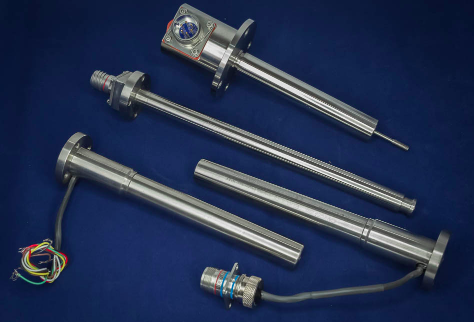Glossary of Terms for Applications of Flight Control Actuators
Flight control actuation systems are essential for aircraft safety, ease of piloting, and control. Maintaining maneuverability is critical for any pilot, and the aircraft’s flight control actuators are a key component to that.
Understanding the components of an aircraft flight control actuation system design helps a person choose the right system for your aircraft. Whether for commercial aircraft or military fighter jets or planes, the actuation of primary flight control surfaces is vital for safety, comfort, control, and, in the case of military craft, evasion, and offensive capabilities.

Here is a look at the applications of flight control actuators:
Ailerons
Ailerons are one of the three primary components of flight control systems. They control the plane’s roll on the longitudinal axis.
Ailerons are connected to the outboard trailing edge of each wing and are controlled by a control wheel or control stick. When the control is moved to the right, for example, the right aileron shifts upward, and the left aileron shifts downward. These movements decrease lift on the right-wing and increase lift on the left, causing the aircraft to roll to the right.
Elevator/ Stabilizer
Also called the stabilizer, the elevator controls the pitch about the lateral axis. Similar to the aileron, it is connected to the control column in the aircraft’s cockpit. Moving the control aft in the column will control the elevator.
In the up-elevator position, the camber of the elevator creates downward force. These aerodynamic changes create more force than when the plane is flying straight and level. The forces cause the tail of the aircraft to move down and the nose of the aircraft to pitch up at the center of gravity. If the control column is moved forward, the opposite effect occurs, allowing for a decrease in altitude.
Controlling pitch depends on several factors, including power, thrust line, stability, and the position of the horizontal tail surfaces.
Rudder
The rudder controls the aircraft’s yaw – its movements along its vertical axis. Like the aileron and elevator, it’s one of the three primary flight control applications.
The rudder is a movable surface that’s attached via hinges to a fixed surface. Left and right pedals often control the rudder. When it’s positioned into the airflow, a horizontal force is applied to the craft in the opposite direction. Pushing the left pedal moves the aircraft left and vice versa.
Flaps
One of the secondary flight control applications, flaps are surfaces attached to the trailing edge of wings. They provide a compromise between low landing speeds and high cruising speeds and may be extended or retracted into the wing as needed.
There are four common types of flaps, including
- Plain - This type increases the airfoil camber increasing the coefficient of lift and drag, causing the nose to pitch down.
- Split - They’re deflected from the lower surface and provides more increase in lift than plain flaps. More drag is created due to the air turbulence behind the aircraft.
- Slotted Flaps - These boost the lift coefficient much more than plain and split flaps do and are increasingly popular. Large craft often have double- or triple-slotted flaps, offering maximum drag increase while eliminating the separation and destruction of lift
- Fowler Flaps - They are a kind of slotted flap, increases the wing area, and changes the wing’s camber. Fowler flaps slide backward on tracks rather than rotating, resulting in an increase in lift
Spoilers
Often found on fixed-wing craft, spoilers spoil the smooth airflow over the wings, increasing drag and reducing lift. They are particularly helpful in roll control.

Key Takeaways:
- Flight control actuation systems are critical for commercial and military aircraft
- Primary components include ailerons, elevators, and rudders
- These flight control actuator components control aircraft maneuverability, lift and drag
Contact Sentech Today!
At Sentech, we provide sensing solutions that help maintain high performance and allow for reliable, robust operations in harsh environments. As the global leader in the design and manufacture of position sensors, we deliver customized solutions, including Linear Variable Displacement Transducers (LVDT), Rotary Variable Differential Transducers (RVDT), FASTAR sensors, HYDRASTAR sensors, signal conditioners, and solenoids. To learn more about our flight control solutions, contact us today.


